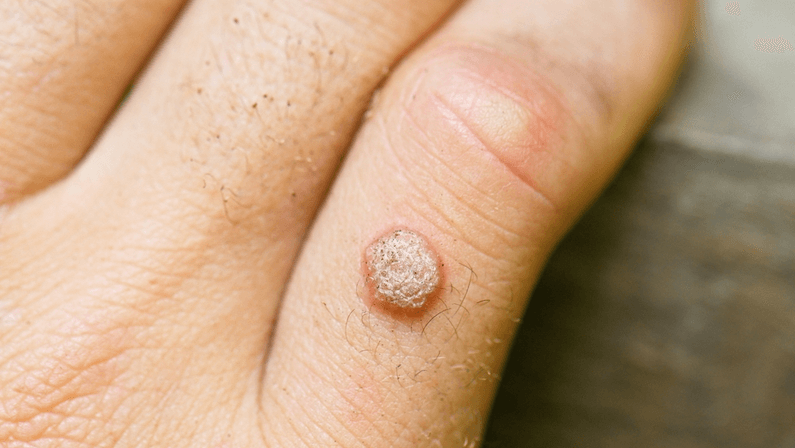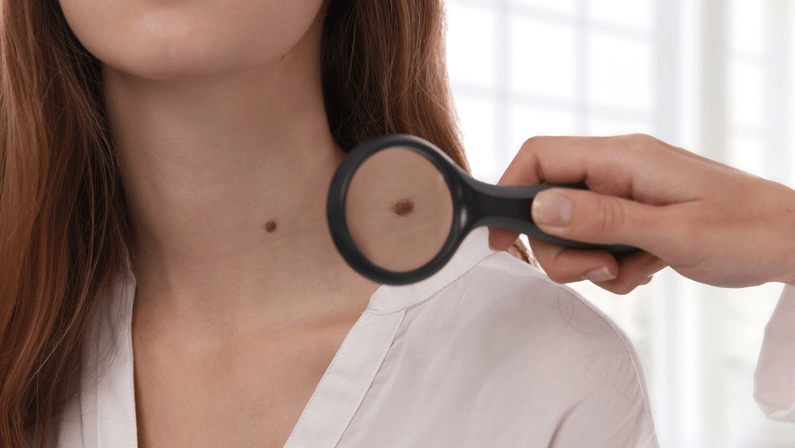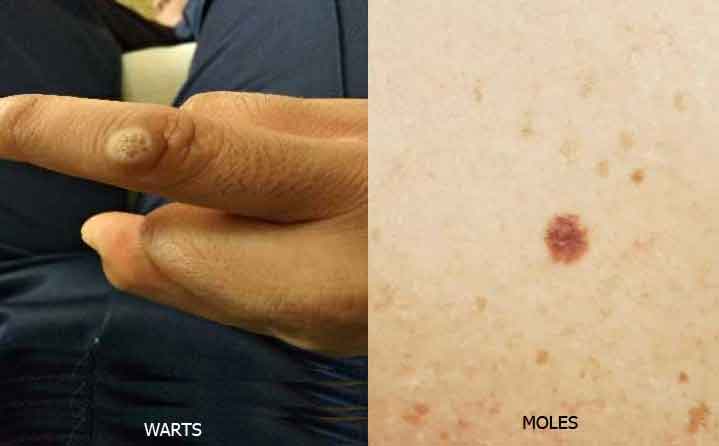Warts and moles are simply baffling, unpleasant, and even distressing. This blog discusses differences between these two including the causes and treatments.
Table of Contents
What Are Warts
A wart is a tiny, rough-textured growth on the skin that resembles broccoli or a solid lesion. Warts can appear on your knees, hands, and the soles of your feet. Unlike moles, they are thick, callus-like, and scaly.
Warts that commonly appear on the hands, particularly around the fingernail, are known as common warts. They can range in hue from gray to skin-toned and are rough on the surface.
On the other hand, plantar warts are warts that can be found on the bottom of one’s foot. The heel and the ball of the foot are the most common places to find them. These warts tend to develop within rather than outward.
Warts can also be found on the backs of the hands and the faces of people, these are referred to as flat warts. It is advised to eliminate these skin lesions as soon as possible in order to prevent the spread of warts.

Causes of Warts
When warts appear, they are typically caused by HPV (human papillomavirus). The existence of a wart on your body may indicate that you came into contact with someone who had a wart virus.
Without eradicating the virus, you will be unable to remove the wart, and, even worse, you may pass it on to others.
What is a Mole
Skin growths that appear black or brown are known as moles. Moles can be found alone or in groups in the first decades of a person’s life or in early childhood.
Moles take a while to grow and if they become cancerous, they begin to change.
Due to their pigment, moles have the rare potential of changing from a regular mole into skin cancer.
Causes of Moles
The color of some moles may change over time, while other moles may gradually disappear. Moles are caused by abnormal cell growth that occurs in clusters rather than a uniform distribution throughout the skin.
Most moles are benign growths of pigment-producing skin cells. Mole growth and the appearance of new moles warrant attention. Moles may darken during pregnancy, sun exposure, or in the teenage years. Moles take a long time to form and progress slowly.
Mole vs. Wart: What is the Difference
It is easy to spot the difference between a wart and a mole. The primary distinction is one of color. Moles are commonly brown while warts appear to be flesh-colored. Hair can grow out of a mole. A mole is not contagious and often forms in sun-exposed locations such as the arms, face, back, and chest.
Both warts and moles can penetrate deep into the skin and different parts of the body. However, the skin on a mole remains soft. Warts, on the other hand, appear like rough skin with points on the surface. They are most commonly found on the hands, feet, elbows, and knees, where the skin is thicker and grows more slowly.
How to Treat Warts and Moles
Contact a dermatologist to get expert medical advice on how best to treat your wart. It’s tempting to try to get rid of these growths on your own but it is not advised. Removing warts and moles can cause infection.
Attempts to remove spots using over-the-counter remedies are frequently ineffective. So, avoid the aggravation and see a dermatologist instead.
You and your doctor will go over the risks and advantages of each treatment plan after a diagnosis has been made.
The severity of a mole or wart determines the appropriate course of treatment. Treatment options for warts and moles include:
- Cryotherapy. The most popular treatment for common warts in adults and older children is cryotherapy (freezing) which is a painless procedure.
- Electrosurgery. Common warts and other types of warts can all be treated with electrosurgery (burning).
- Excision. A surgical curette will be used to remove the growth and even the skin beneath it after the skin has been numb. The excision of warts can be a painful experience.
- Surgical excision. The dermatologist removes the entire mole and, if necessary, sutures the skin closed. A properly qualified doctor will also examine your mole under a microscope. This is done to see if there are any cancer cells present.
- Surgical shave. The dermatologist removes the mole with a surgical blade. In most circumstances, your mole will be examined under a microscope by a properly trained doctor. Your dermatologist will inform you if cancer cells are discovered.
Wart and Mole Treatments in Texas
Skin cancer examinations for early indicators should be performed on a regular basis. All skin lesions, including moles and warts, should be examined by a doctor.
Get in touch with Team Dermatology and visit our branches in Sugarland and Memorial, Houston in Texas immediately to discover more about warts and moles and their safe removal process.




